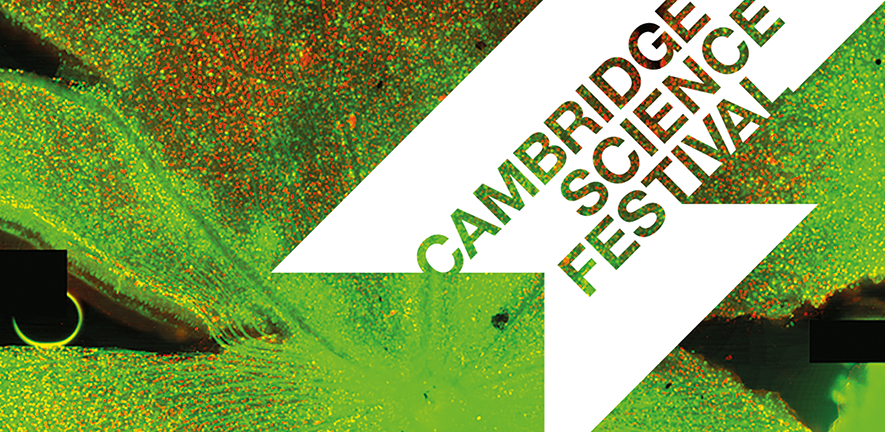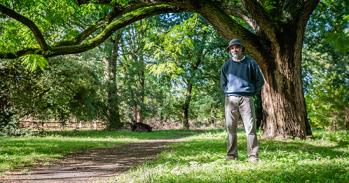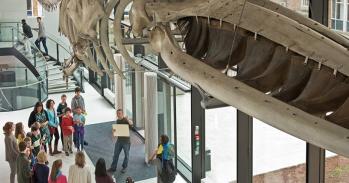
Bookings for the 2020 Cambridge Science Festival open today (10th February) with a huge array of events and scientists at the forefront of groundbreaking research.
Bookings for the 2020 Cambridge Science Festival open today (10th February) with a huge array of events and scientists at the forefront of groundbreaking research.
Now in its 26th year, the annual Festival is set to host 390 free events between 9 – 22 March at venues across the city. The theme this year is ‘vision’.
Healthcare and medicine are a major feature of this year’s programme with sessions on everything from growing mini organs and 3D printing of living cells to a promising new treatment for hardened arteries.
Using state-of-the-art technology, researchers are now able to grow organoids – miniature versions of organs. In Mini-organs in a dish: how organoids are revolutionising research (12 March), Dr Emma Rawlins, The Gurdon Institute, explains how organoids are grown and discusses why this new technology is so important for biomedical research.
Dr Rawlins said: “Organoid technology has already been used to study human embryonic development, to test personalised treatments for cystic fibrosis and to replace some of the animals used in drug testing. Scientists are now exploring its potential for growing replacement organs, repairing damaged genes and providing personalised treatments for other diseases.”
Researchers are also exploring whether they can ‘print’ biomaterials to repair organs among other healthcare benefits. In 3D printing for healthcare (14 March), Dr Yan Yan Shery Huang, Department of Engineering, gives an overview on how 3D printing technologies could transform the way implants are produced, drugs are screened or perhaps even how damaged organs are ‘repaired’.
Dr Huang said: “Research is focused on two main streams: bioprinting for tissue and organ function replacements, including printing a scaffold for a heart, a human ear, and a blood vessel-permeated-bioreactor; and bioprinting for drug testing – pseudo-models of different levels of complexities, from brain to muscles have already been created. Research is continuing, with the aim to reduce and replace animal studies and to improve the predictive power of the models.”
Hardening of the arteries is a major cause of cardiovascular disease, including heart attacks and stroke. Despite the huge impact on human health, there are still no cures. In More than a blocked pipe: the hardening of arteries and their role in stroke and heart attacks (18 March), Dr Nick Evans, Department of Medicine, and Professor Melinda Duer, Department of Chemistry, discuss their combined efforts to find better diagnoses and treatments. They reveal new research and findings on how hardened arteries can be diagnosed more precisely through PET (positron emission tomography), which is proving to be an excellent way to assess patients and could lead to potential new drug treatment.
“To stop artery calcification, we need to stop the mineral from forming in the artery wall in the first place,” Professor Duer said. “We have very recently discovered that a molecule known as poly(ADP ribose), produced by cells in the artery wall that are stressed from fatty deposits around them, is responsible for initiating the formation of the mineral deposits. The exciting treatment possibility is to stop stressed cells from making poly(ADP ribose) – if it works, it will be the first drug treatment for vascular calcification.”
Scientists and researchers at the forefront of tackling ovarian cancer are also making breakthroughs. In Tackling ovarian cancer: turning the tide on one of the toughest cancers (19 March), Cancer Research UK Cambridge Institute (CRUK CI), the Department of Radiology and AstraZeneca discuss how they are rapidly turning the tide on ovarian cancer using innovative new detection methods, including liquid biopsy and virtual biopsy, and through new treatments, such as Olaparib – which became available in the UK in December 2019.
You can book online or download the full programme via Cambridge Science Festival.
Keep up to date with the Festival on social media via Facebook and Twitter #CamSciFest and Instagram.

The text in this work is licensed under a Creative Commons Attribution 4.0 International License. Images, including our videos, are Copyright ©University of Cambridge and licensors/contributors as identified. All rights reserved. We make our image and video content available in a number of ways – as here, on our main website under its Terms and conditions, and on a range of channels including social media that permit your use and sharing of our content under their respective Terms.




